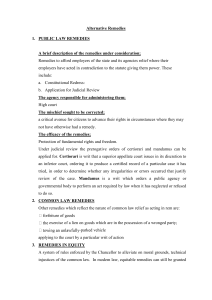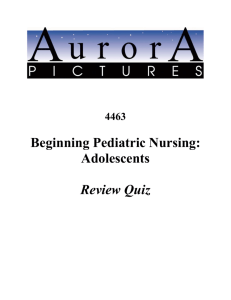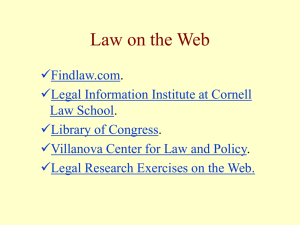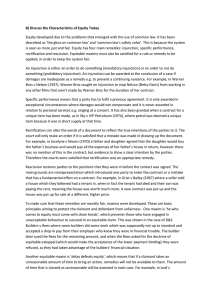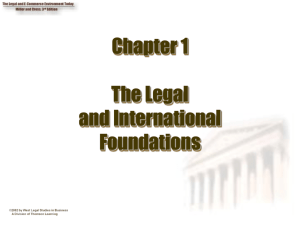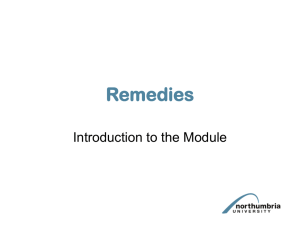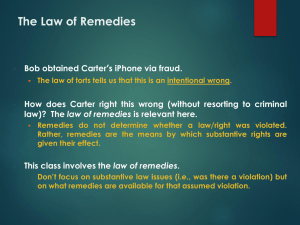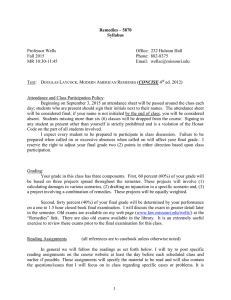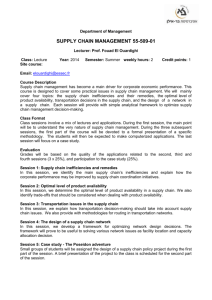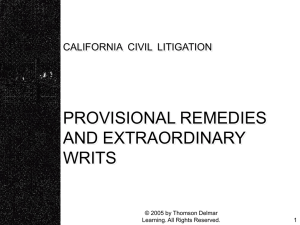Transcript of this slide
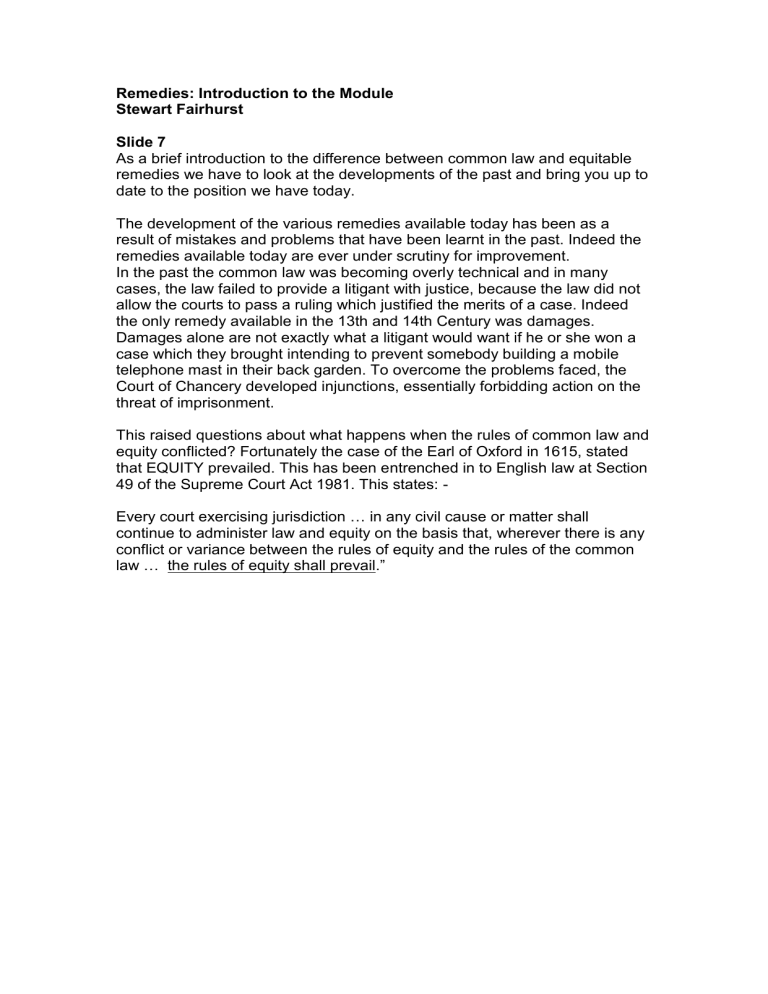
Remedies: Introduction to the Module
Stewart Fairhurst
Slide 7
As a brief introduction to the difference between common law and equitable remedies we have to look at the developments of the past and bring you up to date to the position we have today.
The development of the various remedies available today has been as a result of mistakes and problems that have been learnt in the past. Indeed the remedies available today are ever under scrutiny for improvement.
In the past the common law was becoming overly technical and in many cases, the law failed to provide a litigant with justice, because the law did not allow the courts to pass a ruling which justified the merits of a case. Indeed the only remedy available in the 13th and 14th Century was damages.
Damages alone are not exactly what a litigant would want if he or she won a case which they brought intending to prevent somebody building a mobile telephone mast in their back garden. To overcome the problems faced, the
Court of Chancery developed injunctions, essentially forbidding action on the threat of imprisonment.
This raised questions about what happens when the rules of common law and equity conflicted? Fortunately the case of the Earl of Oxford in 1615, stated that EQUITY prevailed. This has been entrenched in to English law at Section
49 of the Supreme Court Act 1981. This states: -
Every court exercising jurisdiction … in any civil cause or matter shall continue to administer law and equity on the basis that, wherever there is any conflict or variance between the rules of equity and the rules of the common law … the rules of equity shall prevail.”




